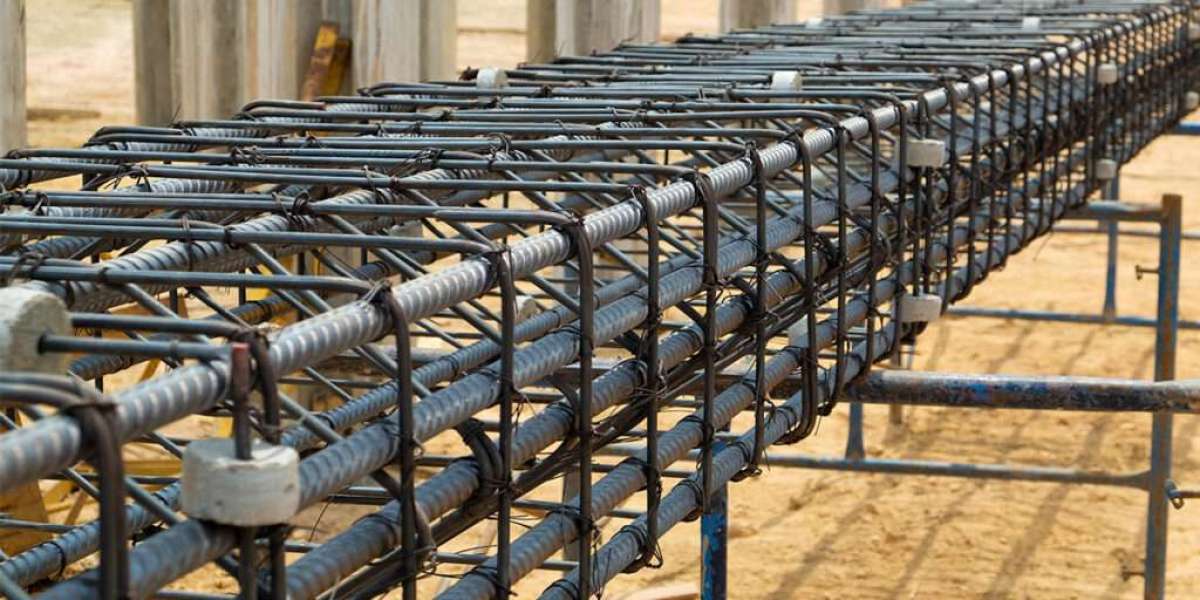Rebar detailing is an essential part of structural design in construction, ensuring that reinforcement bars (rebars) are correctly placed within concrete structures. Rebar detailing involves creating detailed drawings and documentation that outline the exact placement, dimensions, and specifications of the reinforcement bars used in the construction process. This guide aims to provide an in-depth understanding of rebar detailing, its significance, and how it contributes to the success of a construction project.
What is Rebar Detailing?
Rebar detailing refers to the process of preparing detailed drawings and plans that specify the arrangement of reinforcement bars in concrete structures. These drawings provide crucial information to construction teams, enabling them to place the rebar accurately and efficiently. Rebar is used to strengthen concrete, which by itself is strong in compression but weak in tension. The reinforcement bars help concrete withstand tensile stresses, preventing cracking and improving the durability and safety of the structure.
Rebar detailing involves determining:
- The type and size of the reinforcement bars
- The spacing and placement of bars
- The bending and cutting details
- The quantity of rebars required
- The types of connections between different reinforcement elements
- The protective coating or treatment to be applied
Rebar detailing drawings are typically created by professional drafters or engineers using specialized software such as AutoCAD or Revit. These detailed plans are then shared with construction teams, contractors, and fabricators to ensure accurate implementation during the construction process.
The Importance of Rebar Detailing
Rebar detailing plays a crucial role in ensuring the structural integrity of a construction project. Properly placed and designed rebar can help the structure resist various forces such as tension, compression, and shear, leading to safer and more durable buildings. Here are some of the key reasons why rebar detailing is essential:
1. Ensures Structural Safety
The primary purpose of rebar in concrete is to provide strength and durability to the structure. If the reinforcement is poorly planned or placed incorrectly, the building may suffer from weak points that could lead to catastrophic failure. Rebar detailing ensures that the right amount and type of rebar are used in the correct locations, reducing the risk of structural failure.
2. Minimizes Material Wastage
By providing detailed specifications of the required rebar, rebar detailing helps to minimize wastage of materials. Accurate plans ensure that only the necessary amount of reinforcement is ordered, preventing excess materials from being purchased and cutting down on unnecessary costs.
3. Improves Construction Efficiency
Detailed rebar plans allow construction workers to quickly and accurately place the reinforcement bars. This not only speeds up the construction process but also reduces the chances of errors and rework, leading to cost savings and timely project completion.
4. Facilitates Compliance with Codes and Regulations
Rebar detailing helps ensure that a project complies with the relevant local building codes and standards. These regulations often specify the type, size, and placement of reinforcement bars based on the structure’s intended load and other factors. Accurate rebar detailing ensures that the project meets these standards.
5. Enhances Communication Between Teams
Rebar detailing serves as a communication tool between designers, contractors, and fabricators. By providing clear, easy-to-understand drawings and specifications, rebar detailing eliminates any ambiguity, ensuring that all parties involved in the construction process are on the same page.
Key Elements of Rebar Detailing
Rebar detailing involves several important aspects, each of which must be accurately documented to ensure the success of the construction project. Below are the key elements of rebar detailing:
1. Rebar Sizes and Grades
Rebar comes in different sizes and grades, which are specified based on the load-bearing requirements of the structure. The most common types are:
- Mild steel bars (Grade 60): These are the most commonly used reinforcement bars.
- High-strength deformed bars: These bars are designed to provide higher tensile strength.
- Epoxy-coated bars: Used in environments where corrosion resistance is critical.
The appropriate grade and size of the rebar must be chosen based on the design requirements and the conditions the structure will face.
2. Bar Bending and Cutting Details
Rebar often needs to be bent or cut to fit the structural design. Detailed bending schedules and cutting diagrams are essential in the rebar detailing process. These specifications ensure that the reinforcement bars are fabricated correctly, saving time and reducing errors during the construction phase.
3. Bar Placement and Spacing
The placement of reinforcement bars is critical to ensure that the concrete structure is adequately reinforced. Rebar detailing involves specifying the exact location and spacing of the bars within the formwork. The spacing depends on factors such as the type of structure, the load it will bear, and the type of concrete used.
4. Tie Bars and Laps
Tie bars are used to hold the reinforcement bars in place, ensuring proper alignment during pouring and curing. Laps are the overlapping sections where two pieces of rebar are joined to form a continuous reinforcement. Both tie bars and laps must be specified in the detailing process to ensure the stability and strength of the structure.
5. Cover and Protection
Concrete is used to encase the rebar to protect it from corrosion and environmental factors. The minimum cover required around the reinforcement bars is specified by local codes. Rebar detailing includes ensuring that the proper cover is maintained to guarantee the durability and longevity of the structure.
6. Rebar Detailing Drawings and Schedules
Detailed drawings and schedules are prepared to represent the layout, bending, and positioning of the reinforcement bars. These drawings may include:
- Plan views: Showing the location of reinforcement within the formwork.
- Elevation views: Showing the vertical placement of bars.
- Sectional views: Showing detailed cross-sections of the concrete and reinforcement layout.
- Bending schedules: Providing a list of the lengths, bends, and shapes of the reinforcement bars.
Software Tools for Rebar Detailing
Rebar detailing has become more efficient with the introduction of advanced software tools. These tools allow for precise modeling, design, and visualization of reinforcement placement. Some of the popular software for rebar detailing include:
- AutoCAD: A versatile design tool that is widely used for rebar detailing, offering customization options to create accurate drawings and schedules.
- Revit: A BIM (Building Information Modeling) software that allows for integrated rebar detailing, helping teams coordinate reinforcement placement within the overall structure.
- Tekla Structures: A powerful 3D modeling tool specifically designed for rebar detailing and steel fabrication, commonly used for large-scale construction projects.
- BendCAD: A specialized software for generating bar bending schedules, improving the accuracy of cutting and bending operations.
These software tools streamline the rebar detailing process, reduce errors, and improve collaboration among teams.
Challenges in Rebar Detailing
While rebar detailing is crucial for the success of a project, it is not without its challenges. Some of the common challenges include:
- Complexity of Designs: Large, intricate structures with complex reinforcement requirements can lead to complicated detailing. Managing multiple layers of reinforcement and ensuring that all details are correctly captured can be time-consuming and prone to errors.
- Coordination with Other Trades: Rebar detailing must be coordinated with other trades such as electrical and plumbing to avoid conflicts in the layout.
- Adherence to Standards: Compliance with local building codes and standards is critical, and failing to meet these requirements can lead to costly revisions or delays.
Conclusion
Rebar detailing is a critical component of any construction project that uses reinforced concrete. By ensuring that reinforcement bars are properly planned, placed, and documented, rebar detailing helps ensure the strength, durability, and safety of a structure. With advances in software tools and technology, rebar detailing has become more efficient and accurate, helping to streamline the construction process. Understanding the key elements of rebar detailing and its importance in construction can lead to more successful and cost-effective projects.





